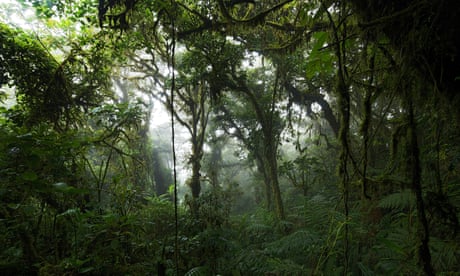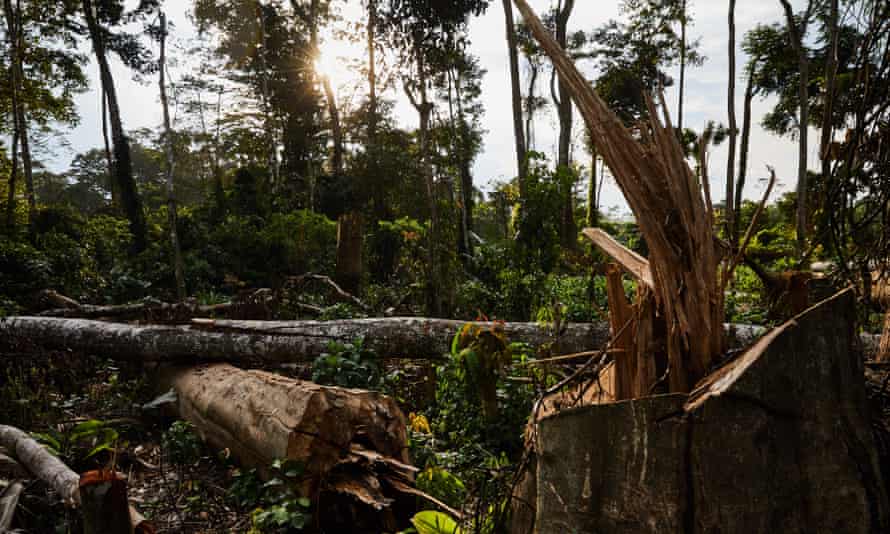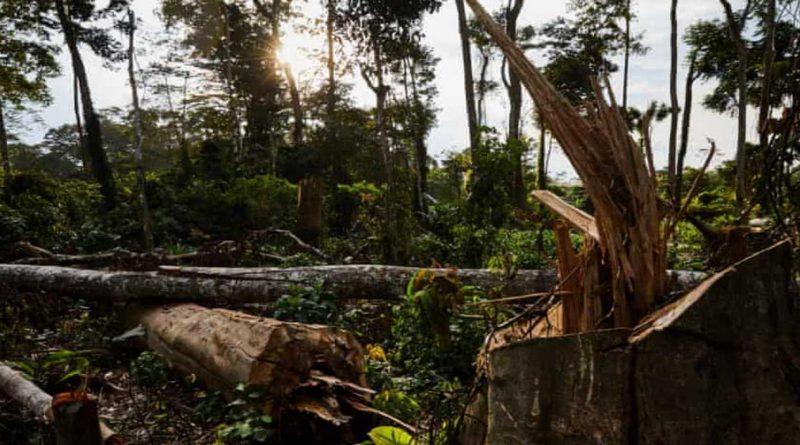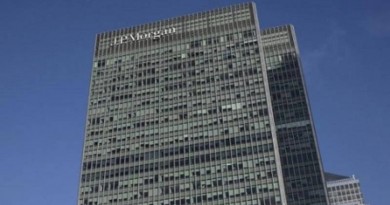Relentless’ destruction of rainforest continues despite Cop26 pledge by Patrick Greenfield – TheGuardian
Pristine rainforests were once again destroyed at a relentless rate in 2021, according to new figures, prompting concerns governments will not meet a Cop26 deal to halt and reverse deforestation by the end of the decade.
From the Brazilian Amazon to the Congo basin, the tropics lost 11.1m hectares of tree cover last year, including 3.75m ha of primary forest critical to limiting global heating and biodiversity loss.
Boreal forests, mainly in Russia, experienced a record loss in 2021 driven by the worst wildfire season in Siberia since records began, according to new data from the University of Maryland released via Global Forest Watch.
Experts called the continued forest loss a disaster for action on global heating and said the 143 governments that pledged to halt and reverse forest loss by 2030 at Cop26 held in Glasgow, had to urgently make good on their commitment.
Advertisement
Of the primary rainforest that was lost in 2021 – releasing the equivalent of India’s annual fossil fuel emissions – 40% disappeared in Brazil, with the Democratic Republic of Congo, Bolivia, Indonesia and Peru making up the rest of the top five.
Despite the persistent loss of forests, experts pointed to signs of hope in the new figures. Indonesia reduced primary forest loss for a fifth straight year following government action on palm oil, fire management and an updated national climate plan which committed the country to becoming a carbon sink by 2030.

Malaysia has also reduced primary forest lost in recent years, and experts pointed to the examples of Gabon and the Guyanas, that have had very low rates of forest loss over the last two decades.
Rod Taylor, the global director of the forests programme at the World Resources Institute (WRI), which compiled the report, said while the global rates of forest loss appeared to be flatlining, they needed to dramatically decrease for the world to meet climate targets.
“When you look at unchanging year-on-year statistics, you could conclude that they don’t really offer a newsworthy headline. But when it comes to the loss of primary tropical forests, stubbornly persistent rates relate to the climate, the extinction crisis and the fate of many first peoples. High rates of loss continue despite pledges from countries and companies,” Taylor said.
Wildfires, rising temperatures and land clearances are affecting the resilience of forests around the world. Warnings point to parts of the Amazon being in danger of converting from rainforest to savannah. According to the figures there was a particularly worrying spike in deforestation in the western Brazilian Amazon, linked to large-scale clearing for cattle pastures along existing roads.Advertisement
When approached for comment by the Guardian, a spokesperson for the Brazilian government said they were committed to the Glasgow forest agreement aimed at eliminating illegal deforestation by 2028, and had dedicated extra resources to meeting the target.

The expansion of small-scale agriculture and harvesting of trees to meet energy demands drove forest loss in the DRC last year, while Bolivia experienced record primary forest loss due to agriculture and fires, including in protected areas.
Frances Seymour, a senior fellow at the WRI, said the 2021 figures had to be taken as a baseline for assessing the Cop26 pledges, but underscored that dramatic action was needed, warning that countries that were taking action were not receiving enough financial support.
Seymour said: “We’ve got 20 years of data showing the persistent annual loss of millions of hectares of primary tropical forests alone. But we don’t run out of fingers counting the number of years we have left to bring that number down to zero. We already knew that such losses are a disaster for the climate. They’re a disaster for biodiversity. They’re a disaster for Indigenous peoples and local communities..
“We have to dramatically reduce emissions from all sources. No one should even think any more about planting trees instead of reducing emissions from fossil fuels. It’s got to be both and it’s got to be now before it’s too late.”
The UK environment minister Lord Goldsmith, who played a key role in the agreement at Cop26 of 143 countries to halt and reverse deforestation, said the figures were a stark reminder of the need for governments to make good on their commitments.
“If we continue to degrade the world’s great forests, from the Amazon to the Congo basin, the implications for millions of people are terrible. We are derailing complex natural systems we all depend on, and that in turn makes meeting any of our shared global goals, from peace to prosperity, impossible,” he said.
The DRC and Bolivian governments did not respond to requests for comment on the figures.
Find more age of extinction coverage here, and follow biodiversity reporters Phoebe Weston and Patrick Greenfield on Twitter for all the latest news and features
SOURCE: TheGuardian. by Patrick Greenfield




